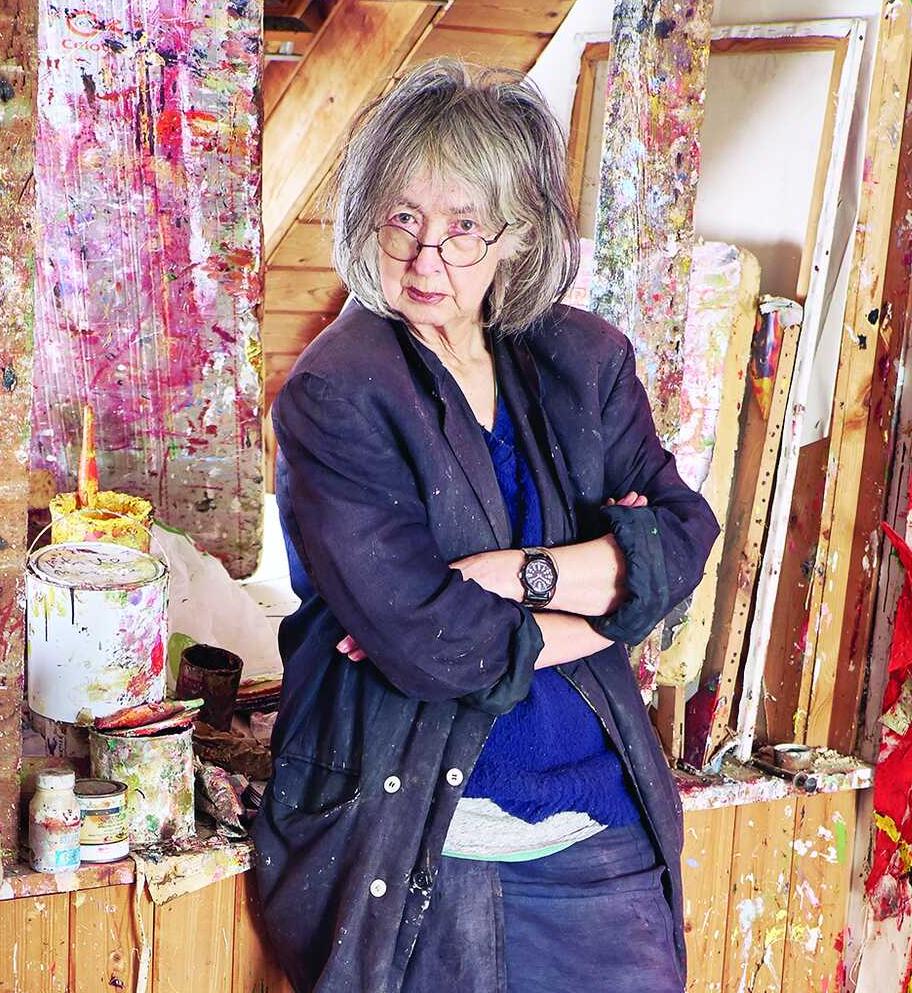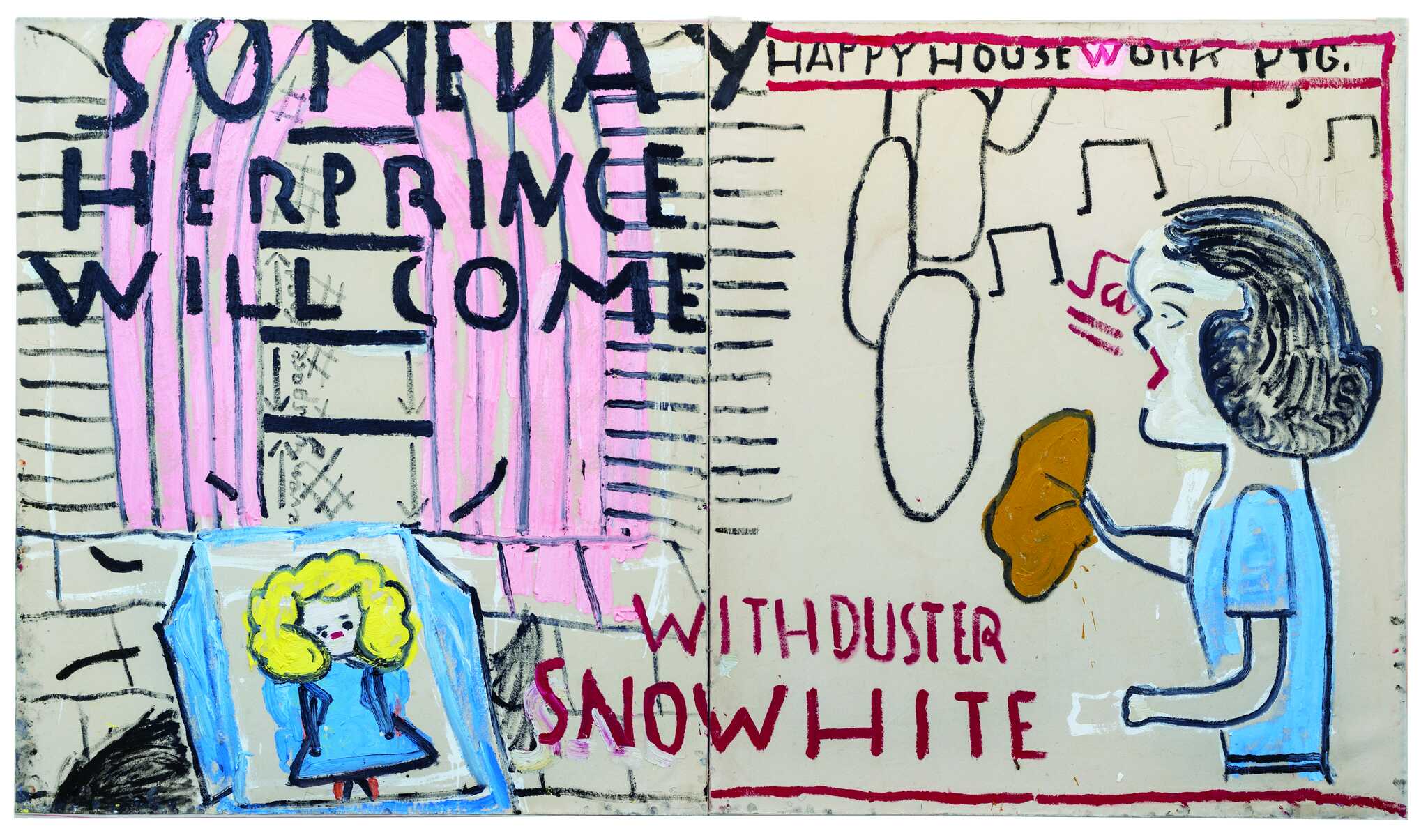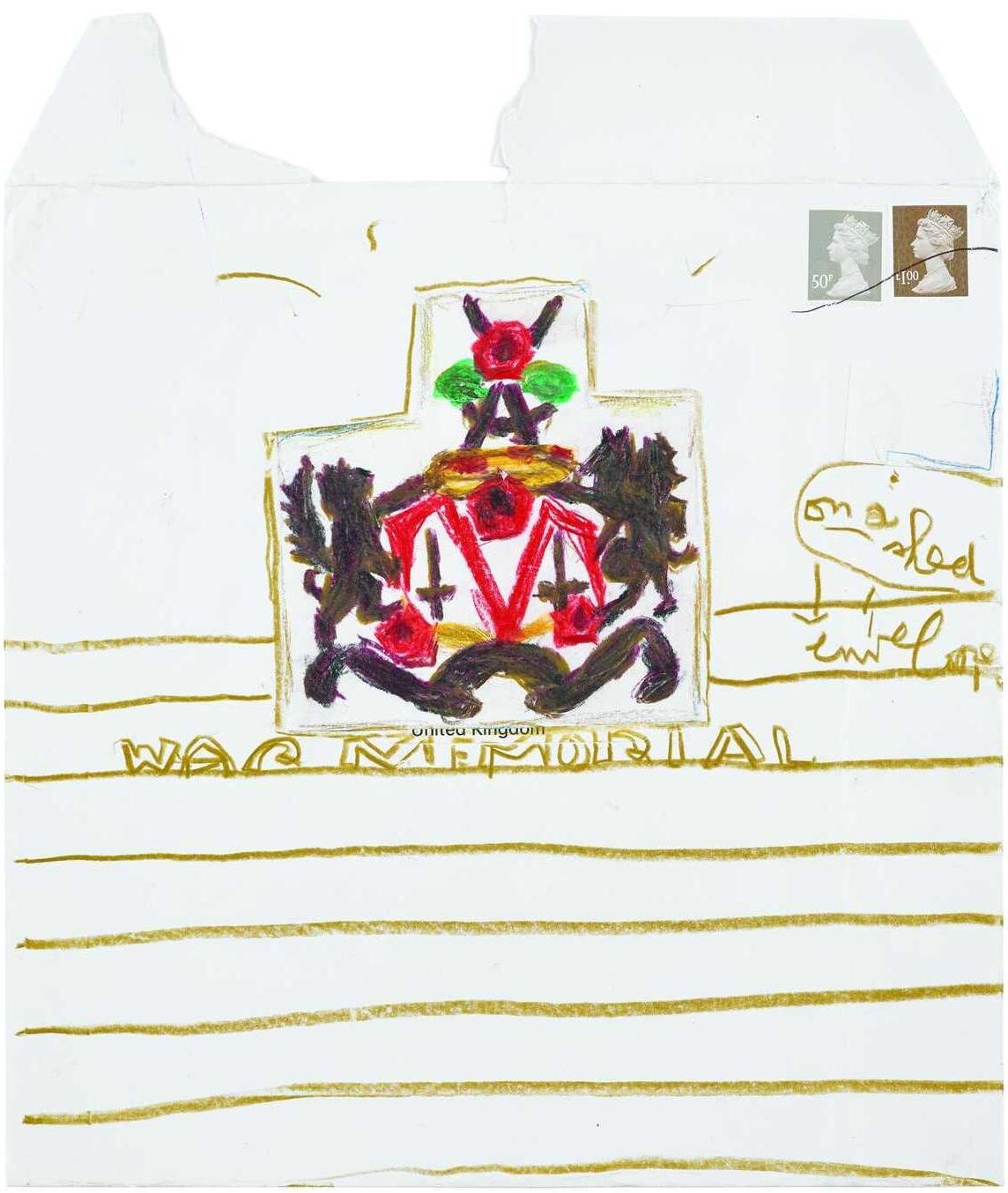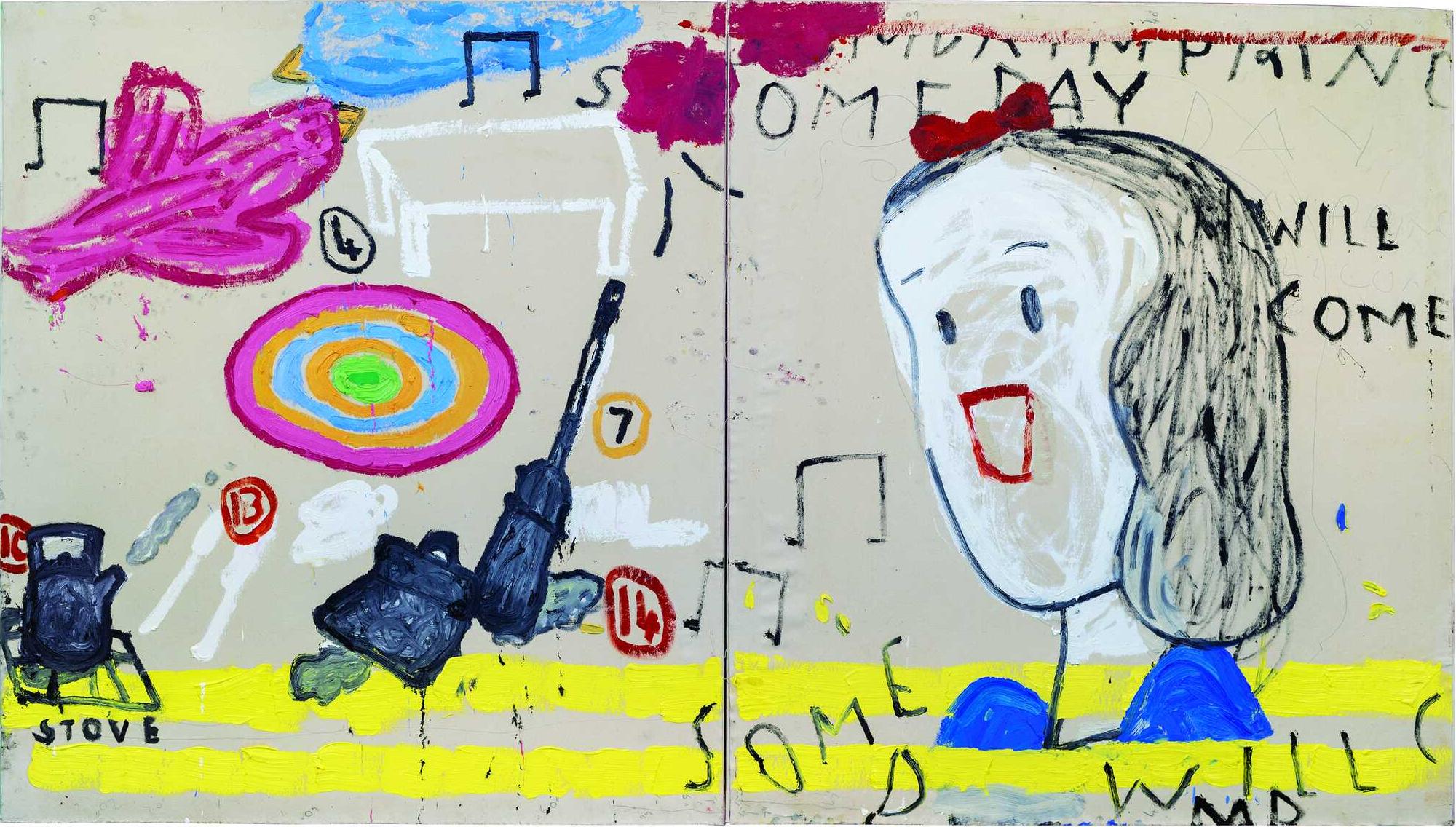Art
TELLING TALES
Words by RICHARD CORK
Late bloomer Rose Wylie didn’t pursue her career as an artist until she was in her late forties, but since then her thought-provoking, fairy tale-inspired paintings have made her a favorite with critics, curators and collectors alike
As she approaches her 86th birthday, Rose Wylie (pictured, above) shows absolutely no sign of slowing down. The paintings on display in her new show at Florida’s The Gallery at Windsor are filled with vitality, wit and defiant inventiveness. They bear witness to the single-minded verve of an irrepressible artist whose international reputation is increasing very swiftly – all the more extraordinary given that Wylie only found renown in her late seventies. Having been to art school in the 1950s, she married fellow artist Roy Oxlade and raised her family, only returning to painting in her forties. This late blooming has brought her an ever-growing following among curators and collectors.
Wylie derives her inspiration from a variety of sources, both contemporary and historical. “I think film is a major 21st-century art form," she says. “I love close-ups and long shots, and the process of filmmaking is a trigger for how you go about making art." As well as constantly visiting the cinema, Wylie responds to “any visually exciting thing I’ve seen. It could be a dead squirrel in my garden or a trip on the Underground." She is stimulated, too, by photos in newspapers. Her studio, in the garden of her house in Kent, southern England, is full of them. Wylie explains that “they’re useful for brush-wiping, but they also have a huge range of current imagery. I like a bit of ‘actual’ – the objective thing filtering back into the image I’m making."
The freshness and freedom of Wylie’s paintings also testify to her love of graffiti and children’s art. Critics often comment on the seemingly naive quality of her work – which belies the sophistication of her ideas – and she is certainly drawn to fairy tales and stories from history. Looking back over her career, she insists “you’re learning all the time. These days, I keep removing certain parts of a painting until it doesn’t look labored."
She often feels “obsessed with painting," but points out that “drawing is central to me. I do it constantly, and then pick a drawing that will be a significant part of the painting process." The enormous amount of energy she devotes to creating her work proves how crucial it has always been within her life. “I’m a great believer in art," Wylie declares, “and I don’t do housework any more. Unlike Snow White, I love not doing it."


Rose Wylie
ELIZABETH AND HENRY WITH BIRDS, 2013
Wylie is fascinated by portraits of aristocrats and monarchs from the Tudor period. “I was arrested by a marvelous painting by Robert Peake the Elder," she recalls. “I find myself attracted to the outfits they wore – quite sculptural, with skirts sticking out from beyond the body. You could hide anything under them." She describes the two grand figures at the bottom of this painting as “English would-be monarchs, with belts and buckles." Above them is their looming gray castle, which threatens to “trap them," but the birds flying through the picture “symbolize escape for me and unite the whole of this tall painting."

Rose Wylie
SNOWWHITE (3) WITH DUSTER, 2018
Snow White was the first film Wylie saw at her local cinema in Hythe, “when I was four or five years old.” She still vividly recalls “being frightened by it, and I was taken out of the cinema screaming! It’s a deeply feminist story.” In this painting “Snow White sings about the future as she’s doing the housework, hoping to dodge the drudgery and make something better for herself.” The words of the song are scattered through the painting, along with household appliances and the multi-colored circular pattern of “the cheap carpet I remember from the film."

Rose Wylie
WAR MEMORIAL, 2019
Wylie has never forgotten the terrifying time in her childhood when German bombers inflicted appalling, widespread devastation on London. “I was there during the worst bit of the Blitz in 1940," she recalls. Wylie was only six years old, and then endured the rest of the Second World War “while living in Kent between 1940 and 1945." That is why she emphasizes that “I’m hugely against war and against destruction generally." Hence her decision in 2019, just over a century after the First World War ended, to paint a picture called War Memorial. It includes “red poppies, and I like the distribution of light and shade."

Rose Wylie
SNOWWHITE (2) ONE DAY HER PRINCE WILL COME, 2018
Two contrasting images of Snow White are seen in this painting, and they could not be more different. On the right, she is depicted as a brunette “holding a duster while conversation bubbles float around her." At the top, Wylie paints the ironic words “Happy Housework Ptg" in capital letters, even though we hope Snow White will soon escape from this confining world. On the left, though, she is shown as a blonde enclosed in a glass-topped coffin. Above her, the window which David Hockney recently created in Westminster Abbey is combined with the poignant words: “Someday Her Prince Will Come."

